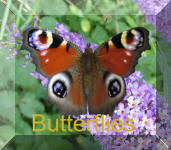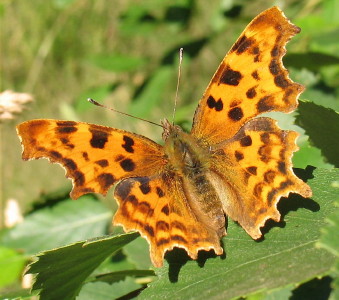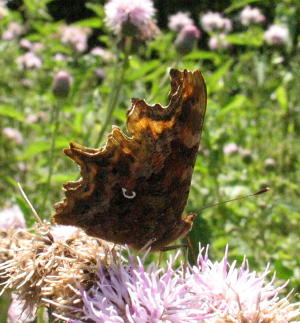The Comma is a fascinating butterfly. The scalloped
edges and cryptic colouring of the wings conceal hibernating adults amongst
dead leaves, while the larvae, flecked with brown and white markings, bear
close resemblance to bird droppings.
The species has a flexible life cycle, which allows
it to capitalize on favourable weather conditions. However, the most remarkable
feature of the Comma has been its severe decline in the twentieth century
and subsequent comeback. It is now widespread in southern Britain and its
range is expanding northwards.
Behaviour and life history
The Comma is a solitary species, rarely seen with
others of its kind, which ranges over quite large areas. It is often to
be seen staking out its territory and vigorously defending it against intruders
of all species. Its general flight can be rather irregular but, within
its territory, it often displays graceful swooping glides. The Comma over-winters
as an adult in woodlands, emerging in the Spring to lay its eggs in late
April or early May. Some four weeks later the caterpillars pupate before
emerging as adults in late June/July. A second brood is on the wing by
late August/early September. Its preferred larval foodplant is the Common Nettle, Urtica dioica, although
it may also be found feeding on elm trees, Ulmus
spp.
Where to look for it
It is a butterfly of woodlands, hedgerows, overgrown
field margins and sheltered gardens.
Distribution and status
Common and widespread
When to look for it
Adults are on the wing from March through to early May, in July, and from
late August until October.
Similar species
The scalloped edges of the wings and the comma
on the underside of the hindwing are diagnostic although, from a distance,
it can be confused with a fritillary but the latter are larger and have
rounded wings



